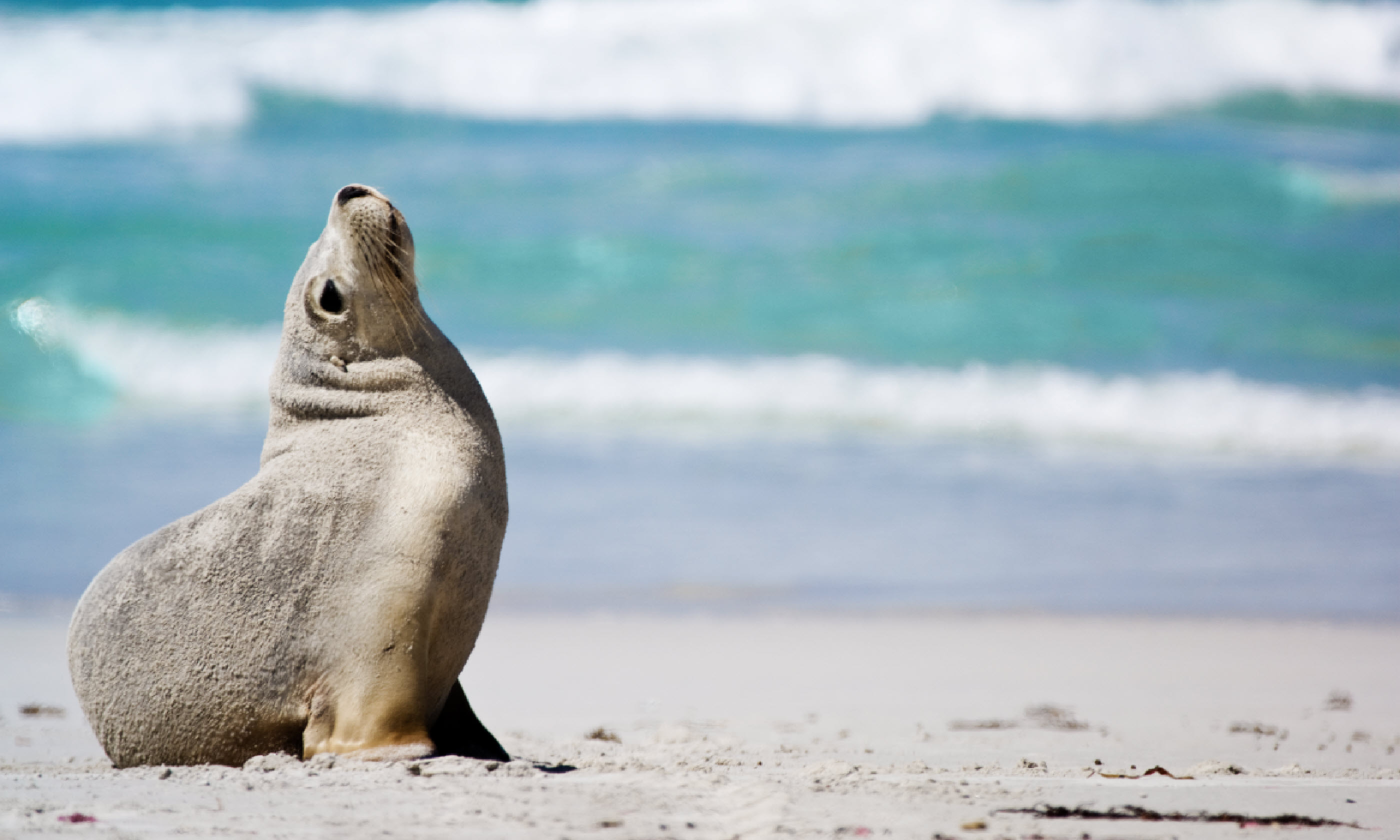
Home of over 10 million animals, tiny Kangaroo Island – 13km off the coast of southern Australia – is a thrilling conservation hot spot
Australia is a strange place. Whether in Sydney or Alice Springs, Queensland or the Northern Territory, everything is that little bit different. And South Australia is no exception: from the wafting scent of its eucalyptus to the exotic flowers of the bottlebrush, from the first sighting of a kangaroo bounding across the state’s open spaces to the unbelievable make-up of the duck-billed platypus, you know you’ve arrived in a land of spectacular design.
Kangaroo Island, 13km from the tip of South Australia’s Fleurieu Peninsula, is just that extra bit beyond. And, like the mainland, it’s unexpectedly huge, covering an area of 4,500 sq km. A third of that area is protected, so it’s no surprise that the flora and fauna found here are rich and diverse. Safe from the ravages of rabbits, foxes and dingoes, Kangaroo Island has a phenomenal abundance of wildlife. Several species are unique to the island and many others have adapted survival traits peculiar to it. The result at times seems like an Australian Serengeti, with a whimsical twist of Galápagos thrown in.
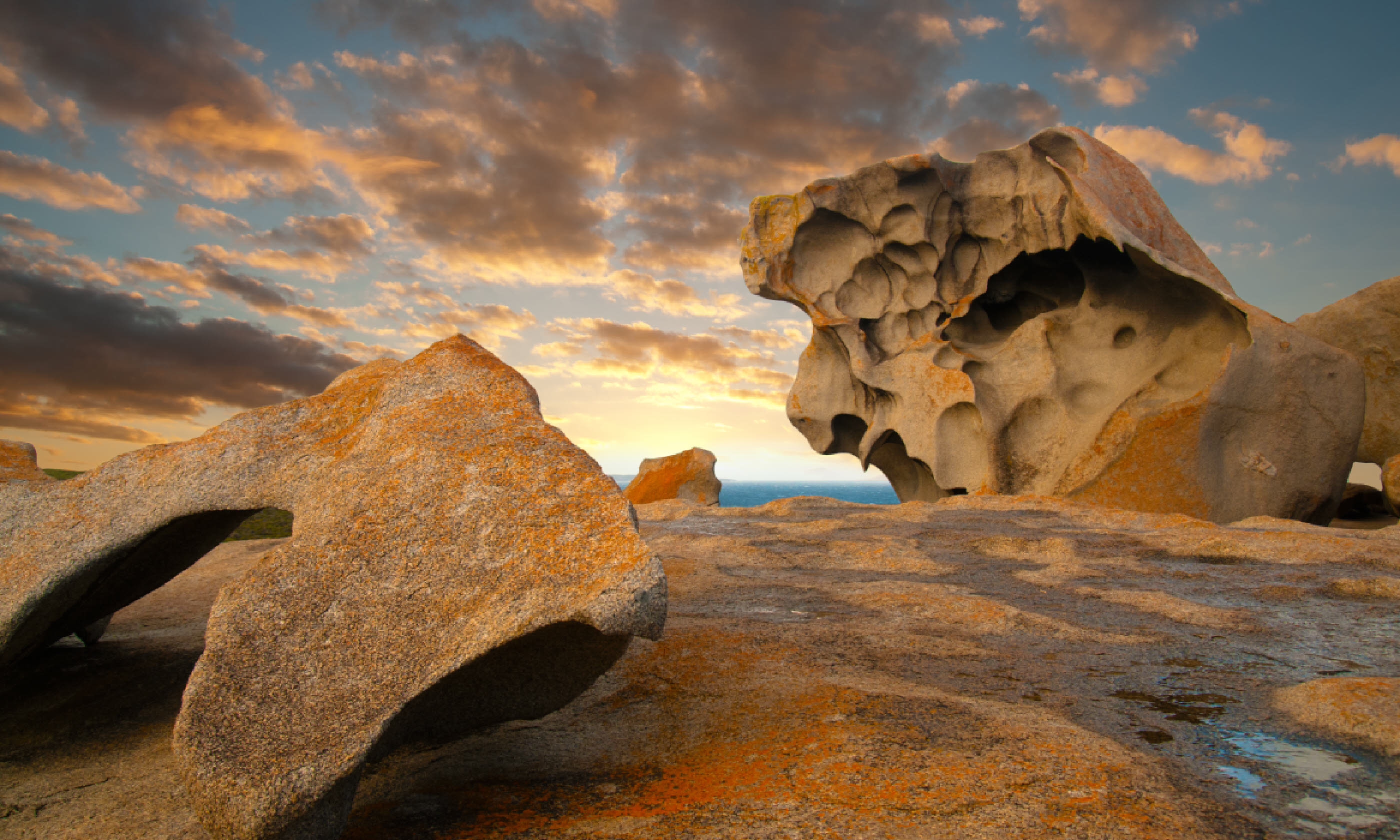
Kangaroo Island coastline (Shutterstock)
The local marketing gurus insist the island has more than ten million non-human residents, including more than one million tammar wallabies and a quarter of a million kangaroos. And don’t even contemplate counting the plentiful brushtail and western pygmy-possums – judging by the road kill, their numbers are massive. The local koalas have become such prolific breeders (estimated population 27,000) that the Parks Service has begun a sterilisation programme to protect the gum trees on which the koalas depend.
Not to be outdone, the island’s 250-odd recorded bird species are just as unique and colourful. There’s the glossy black cockatoo, a large black bird with striking red tail panels, the noisy rainbow and purple-crowned lorikeets who are often spotted dancing about when the eucalyptus flower, and battalions of little (or ‘fairy’) penguins that make a nightly parade onto the shore. And that’s not to mention the sun-worshipping Australian sea lions and the more frolicsome New Zealand fur seals that also use the island as their base. All these animals are attracting an ever-increasing number of tourists, adding significantly to the local Homo sapiens population whose numbers are estimated at a meagre 4,000.
With wife and child in tow, I decided to see first hand what the island has to offer. Our first day went by in a blur as we were whisked away on the lightning-paced Kangaroo Island Highlights tour. Though we managed to see most of the major attractions in one day I can’t say I fell under the island’s spell. By early evening my head was spinning from getting on and off the coach so often.
To wind down we headed to the Bush Bar at the remote Kangaroo Island Wilderness Resort, where we would be staying for the next five nights. As I sipped my first Crown lager I made the mistake of asking resort co-owner Allan Mellor for an update on the forest fire we’d heard was raging on the other side of the island.
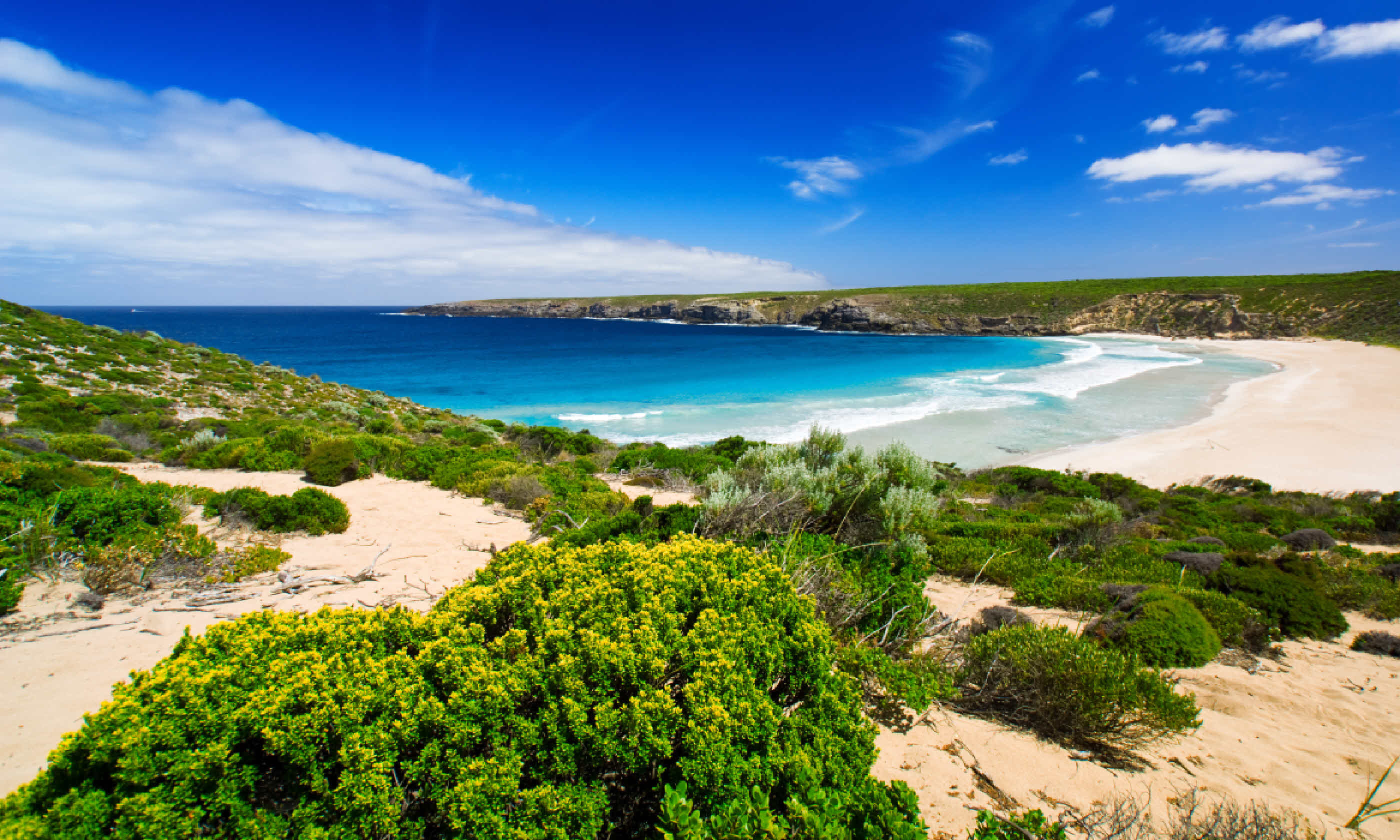
West Bay on Kangaroo Island
“I think it’s just jumped over the North Coast Road,” he said. “What we need to do is back-burn between Parndana Road and the Murray Lagoon, then build a break by the Kaiwarra Food Barn.”
“No, no, no!” Mike, the bartender, broke in. “My brother farms down by Harvey’s Return. He says the wind direction has changed to the south east and we need to keep it from hopping Timber Creek and let it burn itself out down by Emu Bay.”
Sally, the waitress, piped in: “If it were me, I’d dig in by the old Wisanger School and then bring in the helicopters tomorrow to spray down by Duck Lagoon.”
Within a few minutes all the locals were debating the pros and cons of Parks Service options, gesticulating madly, drawing imaginary maps with their fingers and trying to explain to us naive newcomers the intricacies of fighting bush fires. Three hours and several beers later I still had no idea where the fire was burning or how bad the blaze was, but I did have a much keener appreciation of the island than I’d gained in the day’s mad dash across its 150km length.
The next morning we set off at a more leisurely pace to explore ‘Koala Walk’, a wide row of stately eucalyptus trees at the Hanson Bay Sanctuary. We counted 18 koalas dotted amongst the highest boughs, teetering on bending branches, stretching their paws out to grab the tasty, stupor-inducing leaves. One particularly adventurous female clambered down and kindly posed for the camera, then lumbered over to the next tree where she scampered skywards once more. But koala activity is limited to four hours a day and most clung to limbs or sat snugly in a tree’s fork, sound asleep.
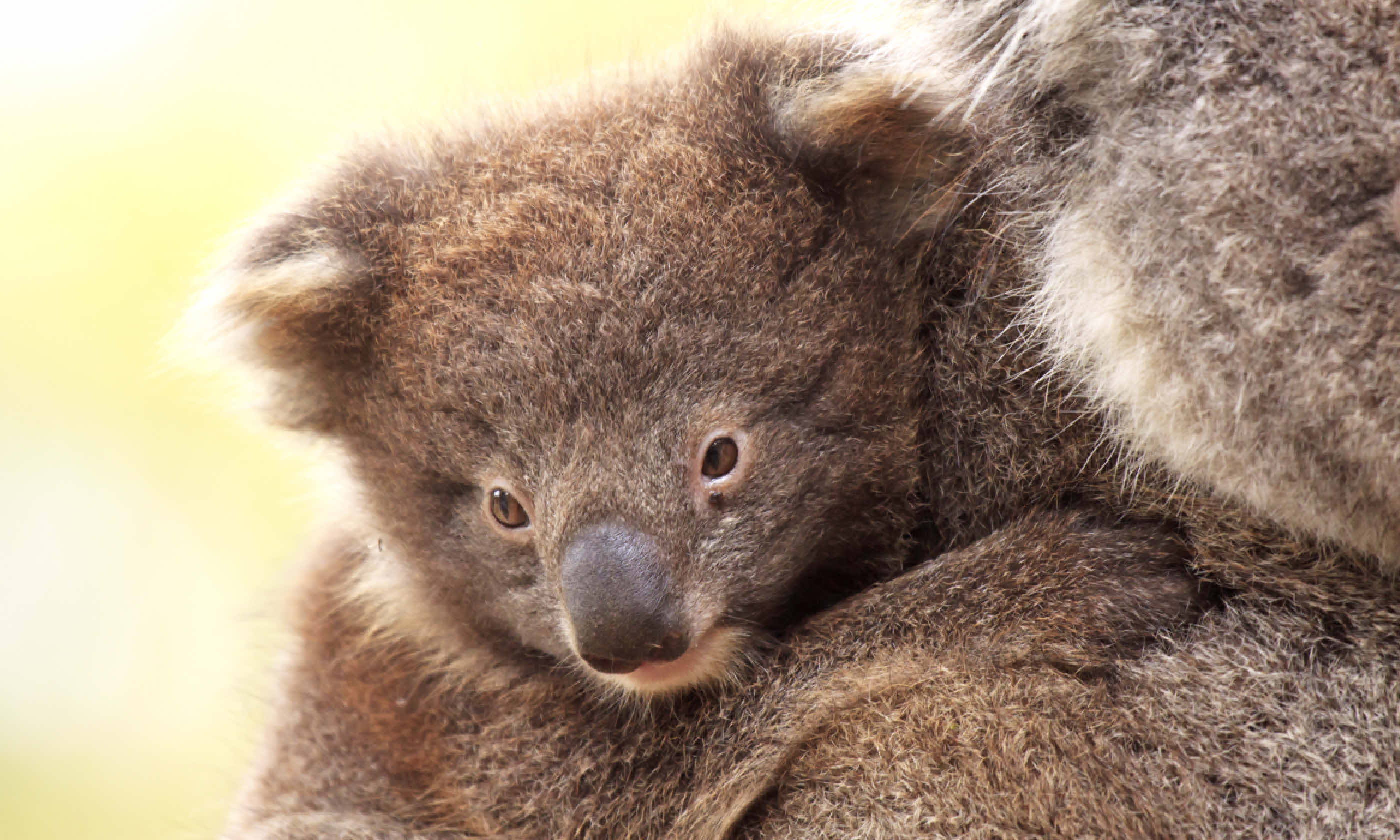
Baby Koala on Mother's Back - Kangaroo Island
Our next stop was Rocky River in the Flinders Chase National Park. Besides information-gathering and a wonderful four-kilometre platypus-viewing trail, the park’s headquarters offered another exquisite treat – the car park is home to the friendliest kangaroos I’ve met. A gentle tickle behind the ears and a scratch under the chin and I had a mate for life. As we patted a mother suckling her young joey, she stared at me with her big, brown, expressive eyes and I began to feel maternal myself. My six-year-old son, Theo, could have stayed in the parking lot all day without a whinge or hunger pang to distract him from the rapture of stroking his new-found friends. But we finally pulled ourselves away.
Having spent most of our time in the interior we decided to explore the coast, and headed down the bumpy Southwest River Road to Hanson Bay. Even in our shock-absorbing 4WD it felt like we were riding along a ten-kilometre sheet of corrugated iron. But when we finally arrived and turned off the engine, the peace was overwhelming. We got out, climbed up the nearest sand dune and saw paradise stretched out before us. A beautiful double bay of white sand lay ahead, completely deserted. To our left a strangely golden-coloured river twisted its way through a gorge of dunes to the desolate beach and the crashing surf beyond. The land seemed a world of perfect serenity, in dramatic contrast to the wild nature of the tumultuous sea. We hiked up the headland between the two bays and below, in either direction, the snaking shoreline stretched to elegant infinity. What was I doing living in Shepherds Bush?
In an awe-struck state, we began the hike back across the dunes. The sun was high; my wife Joanna was in the lead. Suddenly I heard a sharp intake of breath and Jo took a huge step back. Not two metres ahead of us a thick, black, metre-long tiger snake – one of the most venomous creatures on the planet – was slithering across our path. Thankfully the snake took little notice of the three adrenalin-addled humans gaping at it in fear, and meandered nonchalantly into the undergrowth.
When we got our breath back, we began slowly tiptoeing our way back to the car. After about five minutes’ steady progress I turned to take a last look at the glorious bay – and stood squarely on a snake. I froze. Below me, all I could see was a huge gaping pink mouth. At the same time I could see my wife’s expression of utter horror. I could also hear a primitive grunt of fear emanating from my lips. After what seemed like aeons, I leapt off the scaly creature’s back, crashing into my wife and child. Slowly, amazingly, I realised I hadn’t been bitten. Only then did I look back and see, lying in the middle of the path, a big, stump-tailed reptile staring warily back at me. The creature in question turned out to be a harmless sleepy lizard.
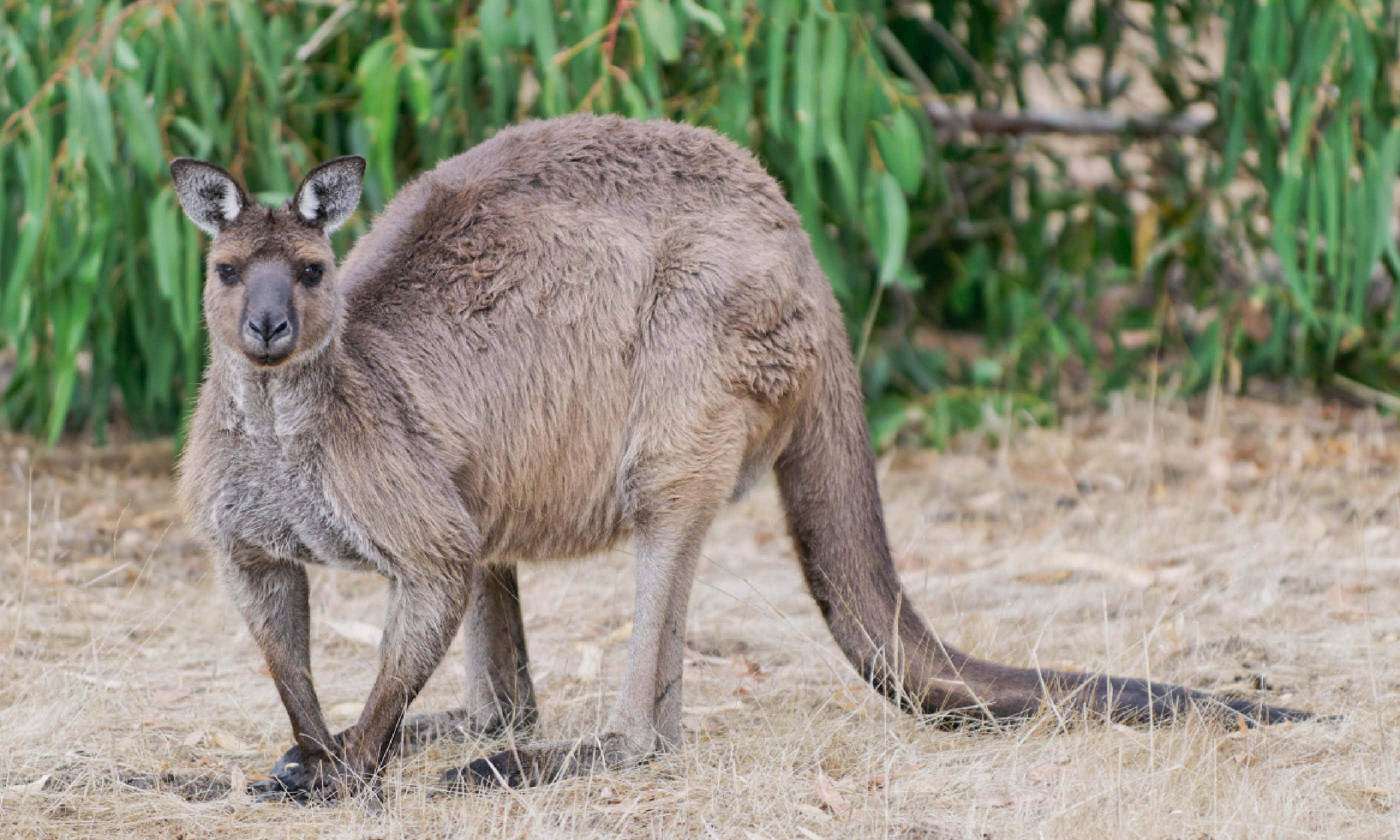
Kangaroo on guard in Hanson Bay on Kangaroo Island (Shutterstock)
With immeasurable relief we left the dunes behind us and headed down to the south-west corner of the island where two unique geological features, Admirals Arch and the Remarkable Rocks, can be found. The rocks are a cluster of huge, Dalíesque boulders perched on a granite dome that plummets 75m down to the sea. In the late evening sun the rocks’ lichen glows, adding patches of bright orange lustre to nature’s surreal artwork. Every twist and turn through the boulders provides a unique and dramatic vista.
But perhaps even more impressive is Admirals Arch. Gazing through the vast, jagged rock wall at sunset is like peering through a magic window. In the vicinity below and beyond the arch a colony of New Zealand fur seals frolicked in the waves as the pounding surf reflected the last rays of the setting sun.
Kangaroo Island offers many sublime adventures for the visitor: some are seduced by the Australian sea lions at Seal Bay; scuba divers are hypnotised by the sight of Gorgonian corals and the elusive leafy sea dragon. But for me, the island’s greatest treasures are its many hiking trails. It’s out in the bush and along the coastal trails that the genuine beauty and mystery of Kangaroo Island can be found.
The day after our rendezvous with the rocks we set out with our host, Allan, to experience our first extended bush walk. We turned off the South Coast Road and drove down a dirt track to Grassdale, a beautiful 19th century homestead. Over the years two families had attempted to tame and farm the property. Though they succeeded in clearing a huge piece of gorgeous ranchland, they never enjoyed any financial reward for their labour – the farm was too remote and the land too infertile. But they did succeed in creating a wonderful wildlife habitat.
We began our explorations at the homestead’s last remaining cottage. One look at its charming rustic setting and my wife was ready to move in. After a peek around we left the car behind and began our hike across the property. We passed through grassland dotted with massive ten-metre-high yuccas, into forests of breathtaking pink gums and down to a pair of pristine lagoons full of abundant birdlife.
All through the varying terrains it felt as if we’d been spied on, but it wasn’t until late afternoon and our return to the grasslands that our silent observers began to show themselves. Behind every bush and tree families of kangaroos and wallabies were materialising as if by magic; thousands of the creatures, in varying shapes and sizes. We were told the old male kangaroos came there to live out their final days. I could certainly understand why – the serenity of the place was palpable. At the same time, young joeys would pop in and out of their mothers’ pouches and scamper around without a care. Allan used the word ‘spiritual’ to describe his love for the homestead – I was inclined to agree.
On our last day Allan again took us to another of his favourite haunts, a trail that ran from the Rocky River campsite eight kilometres along the riverbed to the sea. The trail was a geologist’s dream, full of upturned strata and twisted rock formations. Exotic lizards scurried between rocks, and feral mountain goats clung to the steep cliff-sides.
At the sea the river emptied into a small cove with a delicious and indecently remote beach. I felt like stripping naked and prancing madly like a wild bandicoot. The sound of the surf was mesmerising. What a fantastic locale in which to spend our last evening on the island.
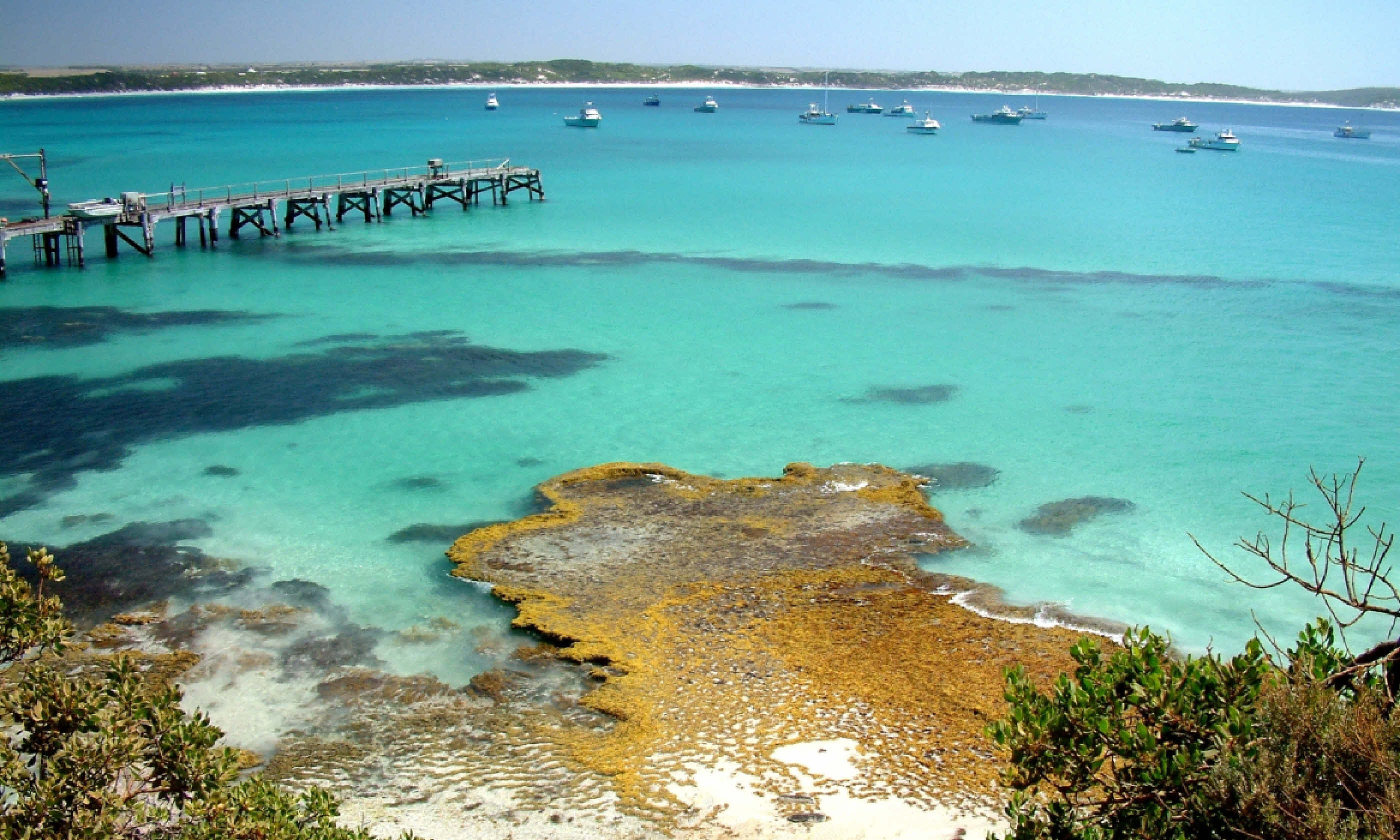
Vivonne Bay, Kangaroo Island (Shutterstock)
But Allan had one last treat in store. He was going to take us to a ‘secret location’ where we had a chance of seeing the famously reclusive duck-billed platypus. On the hike, we explained to Theo that we’d all have to be as quiet as statues if we were to have any chance of spotting the timid animals.
We arrived at the head of the platypus-viewing trail just before dark. Emerging from the path was a coach-load of raucous adventure backpackers, lagers in hand, complaining vociferously that all they’d seen were a few bubbles. We tiptoed past. By the time we reached the series of ponds it was dark; just a hint of a moonlight reflected in the water. We didn’t see a thing of course – the platypuses had probably been scared off for a week. But the silhouette of the trees in the water and the song of the serenading frogs made for an atmospheric moment of contemplation. Out here in the bush, amongst nature’s weird and wonderful creations, I quite understood why the platypuses wanted to be left alone in their beautiful home. If I lived on Kangaroo Island, I think I would too.